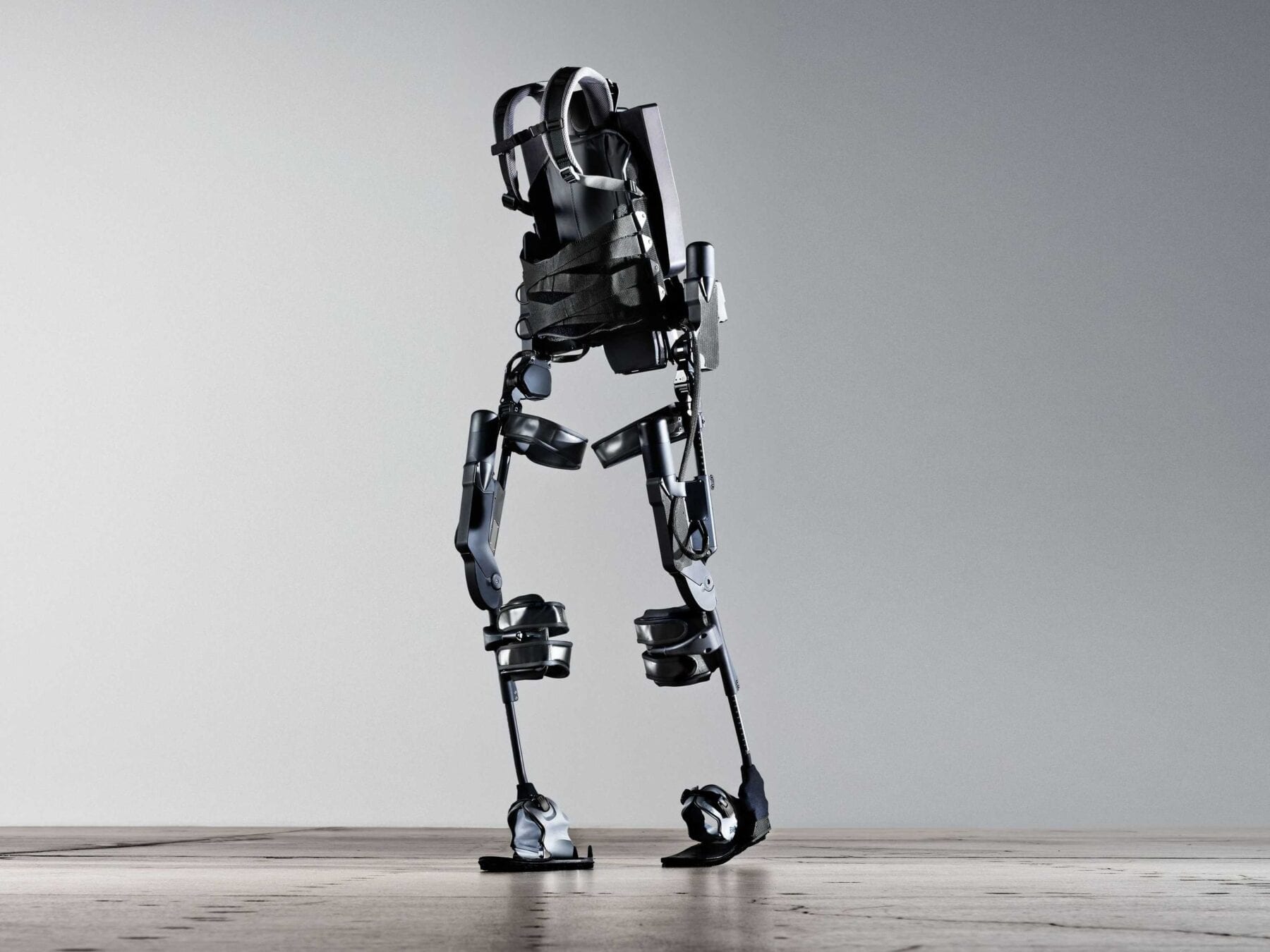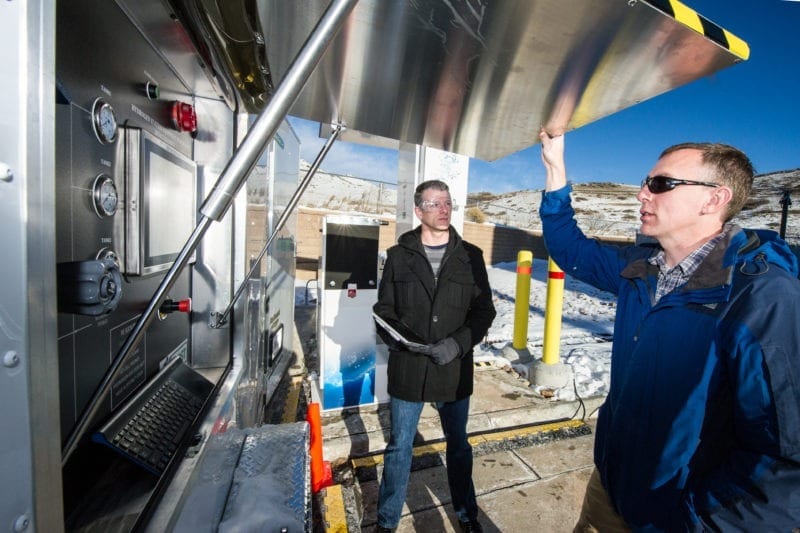
From the battlefield via the factory floor to the orthopaedic clinic, artificial bones and muscles worn outside the body are providing help and protection
SOLDIERS kitted up in expectation of their first taste of combat often reflect on how much of their bodies a bulletproof jacket and helmet do not cover. About 81%, it turns out. More armour than this would be impractically heavy. Indeed, many soldiers already carry at least 50kg of kit and supplies, which is more than double what America’s Army Science Board advises as the limit if damage to a soldier’s skeleton and musculature is to be avoided.
The answer, many suggest, is a second, external skeleton, complete with artificial muscles, that would let its wearer carry far more weight without strain. Such exoskeletons, moreover, are no longer the stuff of science fiction. Interest in their uses, both on and off the battlefield, is growing.
One of the most advanced is the Kinetic Operations Suit (KOS) made by Revision Military, a firm in Vermont. For a soldier this triples his armour-protection while adding little burden to his movement. An artificial articulated spine transfers most of the weight of the suit’s helmet (which fully encases the wearer’s head) to armour on his shoulders. The weight of the armour protecting his torso is similarly transferred to his hips and legs through another section of artificial spine. All this reduces strain on his neck and lower back, the natural skeleton’s weakest links. His legs must still bear the extra weight, however. To assist with this, the KOS uses titanium-aluminium shafts which are strapped, along with armour, to his lower limbs. Electric motors, taking their cue from accelerometers and other sensors embedded in the suit, move these shafts in step with the way the soldier moves his legs.
According to Brian Dowling, a former special-forces soldier in the American army who works for Revision Military, the system is both nimble enough and robust enough to help its wearer run, fully laden, across uneven terrain. The armies of several countries, America’s included, are now evaluating such claims.
A second military exoskeleton, more ambitious even than KOS, is being developed by the special forces themselves. This project’s contractors include many of the most famous names of America’s defence establishment, such as General Dynamics, Lockheed Martin and Raytheon. Intriguingly, they also include Legacy Effects, the firm that designed the exoskeletons which feature in the “Iron Man” science-fiction films. The device these firms have come up with is called the Tactical Assault Light Operator Suit, a name crafted to yield the acronym TALOS, the ancient Greek name of a mythical animated bronze statue.
TALOS will weigh twice as much as the soldier inside it. The components contributing to this weight will, however, make it bullet- and shrapnel-proof. They will also offer its wearer a cooling system; a set of sensors that monitor his physiology; and superhuman strength. The result, according to General Joseph Votel, head of the Special Operations Command, will be “peerless tactical capability”.
Read more: Human exoskeletons – Full metal jacket
The Latest on: Human exoskeletons
[google_news title=”” keyword=”Human exoskeletons” num_posts=”10″ blurb_length=”0″ show_thumb=”left”]
via Google News
The Latest on: Human exoskeletons
- This exoskeleton can boost your physical capabilitieson April 26, 2024 at 7:59 pm
A new generation of lightweight exoskeletons will enable long-distance walkers, hikers and sports enthusiasts to improve their performance, supporting longer periods of physical activity with reduced ...
- Yes, cicadas are safe to eat for both you and your peton April 19, 2024 at 10:59 am
Cicadas are indeed edible, and there are recipes available online. Now whether or not you decide to indulge is up to you.
- Unveiling the Future of Athletics: Top 10 Technological Breakthroughs in Sportson April 19, 2024 at 8:41 am
In the ever-evolving landscape of athletics, technology continues to play a pivotal role in shaping the future of sports. From enhancing performance to revolutionizing training techniques, ...
- Quebec company uses exoskeletons to lighten workers' loadson April 18, 2024 at 2:11 pm
Quebec's Atwill-Morin is using a modern tool to make the age-old profession of masonry and cement work a little easier.
- Yes, cicadas are safe to eat for both you and your peton April 18, 2024 at 9:29 am
“Fresh, unsprayed cicadas are fine for human consumption (cleaned and cooked ... suffer serious consequences because the cicadas’ exoskeletons will be difficult to digest.
- Biomedical Engineer Shifts Focus from Human Movement to Women’s Healthon April 16, 2024 at 6:09 pm
Watching her uncle play a video game when she was a small child started Shaniel Bowen on her path to becoming a biomedical engineer. The game, “Metal Gear Solid 2,” introduced her to exoskeletons, ...
- DRDO Chairman Urges Collaboration to Advance Exoskeleton Technologyon April 16, 2024 at 12:00 pm
In a significant move towards advancing military and civilian capabilities, DRDO Chairman Dr. Samir V. Kamat called for a collaborative effort among the research and development community, the armed ...
- All-terrain exoskeleton turns your body into a superhuman e-hikeron April 16, 2024 at 1:19 am
This new recreational adventure exoskeleton welcomes anyone to high-level hiking, scrambling and climbing, upgrading your anatomy with an extra 900 W of leg power. It shoulders up to 83 lb of load, ...
via Bing News











